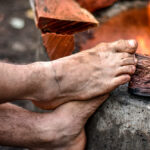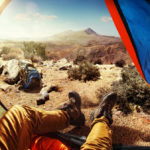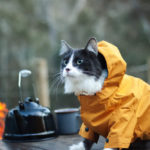Helpful checklist of items you may or may not have thought about to make wonderful camping experiences
Every seasoned camper has a remarkable memory of their first perfect campsite.
But quantifying what made it the best takes a little thought.
What makes an ideal campsite, anyway?
Well, it’s a combination of things, but it boils down to having enough space.
A vibrant, healthy landscape, and a serene body of water close enough for aesthetics and practicality.
Even the tent placement needs to be just right, to keep the storms outside where they belong.
And the final touch is leaving this pristine spot better than before.
Of course, we’d be amiss if we left our definition of ‘camping perfection’ in summary form.
So let’s examine each of these pieces so that you can better see how they come together into the bigger picture. Let’s discuss what makes a great campsite!
Don’t choose a cramped campsite
While it’s fun sometimes to pitch your tent so that it’s nestled deep into the woodlands.
You want to do something like this in a way that still gives you many options.
Simply put, you need to make some space so you don’t limit what you can do.
For instance, many of us have experienced the joys of ‘pit cooking,’ where coals, ashes, and hot stones get shoveled into a pit.
With foil-packed meals of raw vegetables and meat are gently placed inside, buried, and then slow-cook over a few hours while you explore and enjoy the area a little.
That doesn’t take a lot of space, but you certainly don’t want your cooking pit to be 2 feet in front of your tent and equipment cache.
This is just an example, though, and there are undoubtedly other things that need space that you might have in mind.
Such as ‘cleaning stations’ if you are hunting or fishing for your meals, a shower station if you are hanging a solar shower… you get the idea.
Don’t limit your options to a tiny, cramped space!
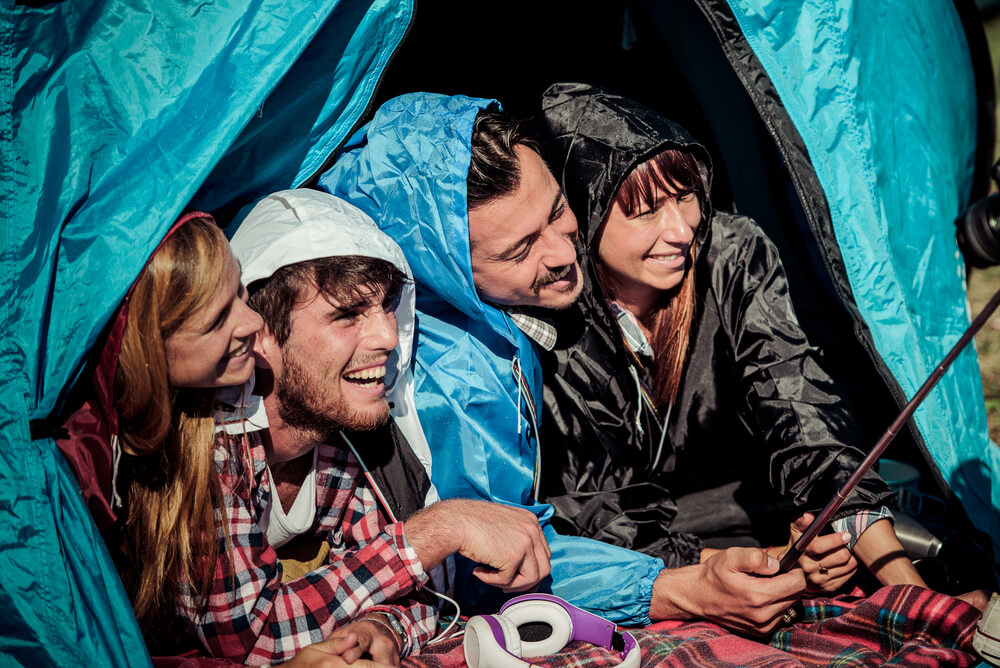
Get a closer look at the trees
While dead or dying trees are suitable for ghost stories, you obviously wouldn’t want to camp with them.
A storm-kissed breeze could easily send some deadwood over, and someone might get hurt.
That said, there are more factors than obviously dead trees that you need to consider when scouting out the perfect site.
Let’s look at a few considerations that you’ll want to keep in mind when scoping out the ideal clearing:
- Damaged trees – Clawed trees, trees with one half-hearted ax-stroke mark in them, or those with mushrooms at the base of the tree (showing a pathogen-induced rot is at play) are all things to watch out for. Aside from possibly falling on your tent, some have spores that can ‘hitchhike’ as you move and spread to infect healthy trees!
- Storm-soaked ground – Overly soaked ground should give you a pause, at the very least, especially if you see some mushrooms at the base that might show root rot is at play. If the roots aren’t firmly established, along with the much, you might have a recipe for a tragic tree fall that might otherwise be easily avoided.
- Healthy Trees that lean – Leaning trees are great for pictures but not so great to camp next to. Remember that they are heavier than they look and could easily hurt or even kill a camper if they fall. Consider a leaning tree for what it is – a potential disaster with a warning sign practically lit in neon.
- Peeling or dusty bark – Peeling bark or sawdust-type collections seen on or at the base of a tree typically show that wood-boring beetles or other tree-eating pests are busy having a meal that will not end well for the tree that will not end well for anyone but the beetles. Note it, avoid it, and keep looking.
- Shade factors – Don’t forget that the shade will be cast opposite of where the sun is, and that position depends on the time of day. Great shade in the morning is no guarantee that you won’t be baking during the hottest time of the day, so visualize the shade factors from sunrise to sunset as best you can.
You’re going to need water
Water is one of those things we take for granted until we run out of it.
So you want to have an excellent source nearby to make sure that you can do any necessary washing or even make it potable if the bottled water runs out.
Ideally, you should be approximately 200 feet away from the path and water source itself.
And you want a spot with a little elevation, just in case a storm comes knocking and decides not to go home for a few days.
Also, make sure that your campsite isn’t too close to others with the same idea and try not to block anyone’s view – it’s not only rude, but you might find yourself afraid to leave your campsite just because there are other campers nearby with a low opinion of you that might decide to ruin your day, too.
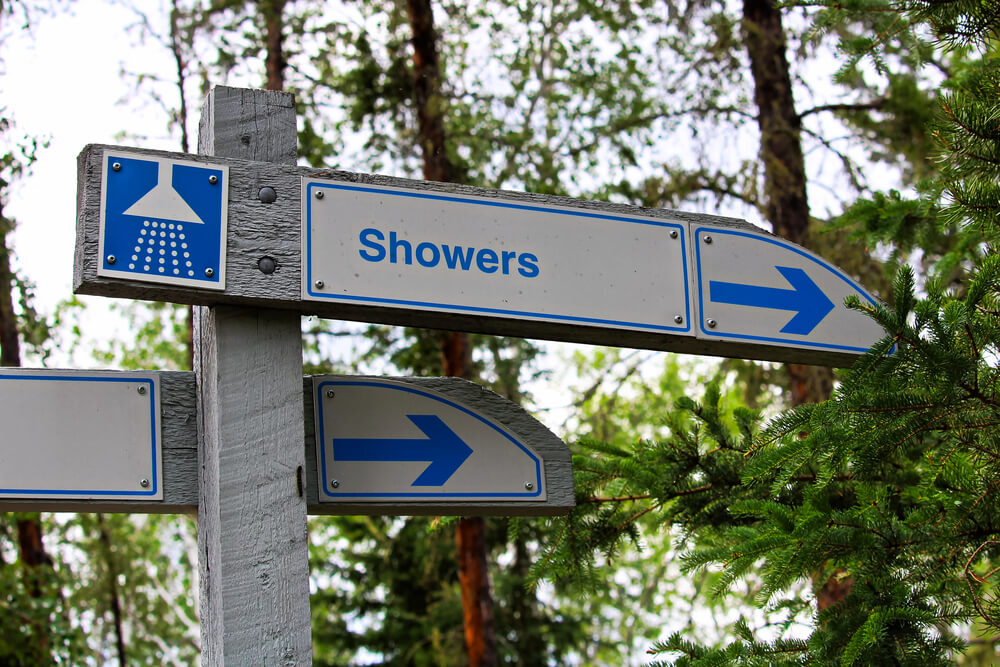
It’s important where you face the tent door
Believe it or not, the direction your tent door is facing is essential.
Seasoned campers know this, but if you haven’t heard this before, then bear with us – all will be revealed!
It’s just a simple matter of where storms will approach you.
In the United States, storms come in from the south and the west, so if your tent door is facing this direction.
Rainwater and hail will be aimed right at your door.
When you unzip that flap to get inside, you’ll let it in for a second, and other campers will probably hear you cursing from a mile away.
However, this is easy to avoid by simply facing your tent door to the north or east.
We recommend the east, as the west is where the lion’s share of storms will blow in from, but in this glorious information age.
You can hedge your bets with a quick Google on the last 2-3 years of weather and storms in the area.
That will show you where they blew in from before, and you can face your door north or east in anticipation that nature might try the same tactic again.
If it does, you’ll be dry, and you can enjoy the heavenly sound of rain on your tent instead of shivering and having a few choice words with Mother Nature.
Leave the site better than you found it
The Boy Scouts get the credit for coining that phrase that most of us are familiar with.
It boils down to ‘you need to leave your campsite better than when you found it, and its sage advice.
While some of us like finding a ready-made ‘surprise’ firepit.
Nothing steals your thunder like finding 5 or 6 of them, and it is more fun to make with your friends and family anyway!
Remember – we’re all out there because we love nature and some of our fondest memories are of spending time with friends and family right out in the middle of the wild.
So, clean up the campfire, don’t move more rocks than you need and try to remember where you got them so that you can put them back.
It should go without saying, but don’t leave any trash lying about or piles of deadwood that you didn’t use for the fire.
That wood can quickly get infested or support a little fungus colony that can make your new site into an awful parody of what it was when you found it.
Make it better than it was. Other people will make memories there too, and who knows?
Come back to that exact spot the next year or even in 10 years.
It’s nice to see that it’ll be waiting because you’ve preserved the magic that lured you in the first place!
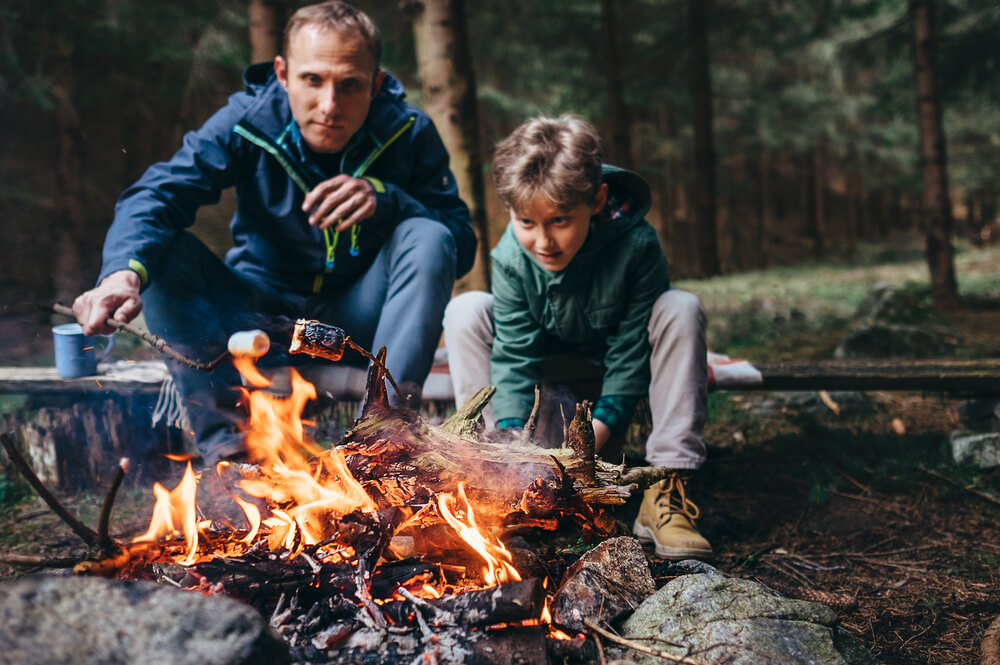
A safe and serene spot for making memories
Ultimately, these pieces come together, and you get the honest answer to ‘what makes a great campsite,’ and that answer is ‘the memories.
By giving yourself enough space, you can do more things that you and the ones you love will populate into nostalgia that lasts for a lifetime.
Scoping out the trees ensures wonderful shade and helps you to avoid the risks of sick, leaning, or root-compromised trees while making the scenery into the stuff of fairy tales.
Nearby water adds to the aesthetics while filling your practical needs, and facing your door the right way helps to ensure that ‘surprise storms’ don’t ruin anyone’s day.
You tie it all up with a lesson about preserving nature by carefully cleaning up the area to remove all traces that you were there, and that cements the memories.
With the site pristine again, all that remains is the time you enjoyed there, alone or with your loved ones, and that’s a memory that will keep you warm through silver winters for the rest of your life!

